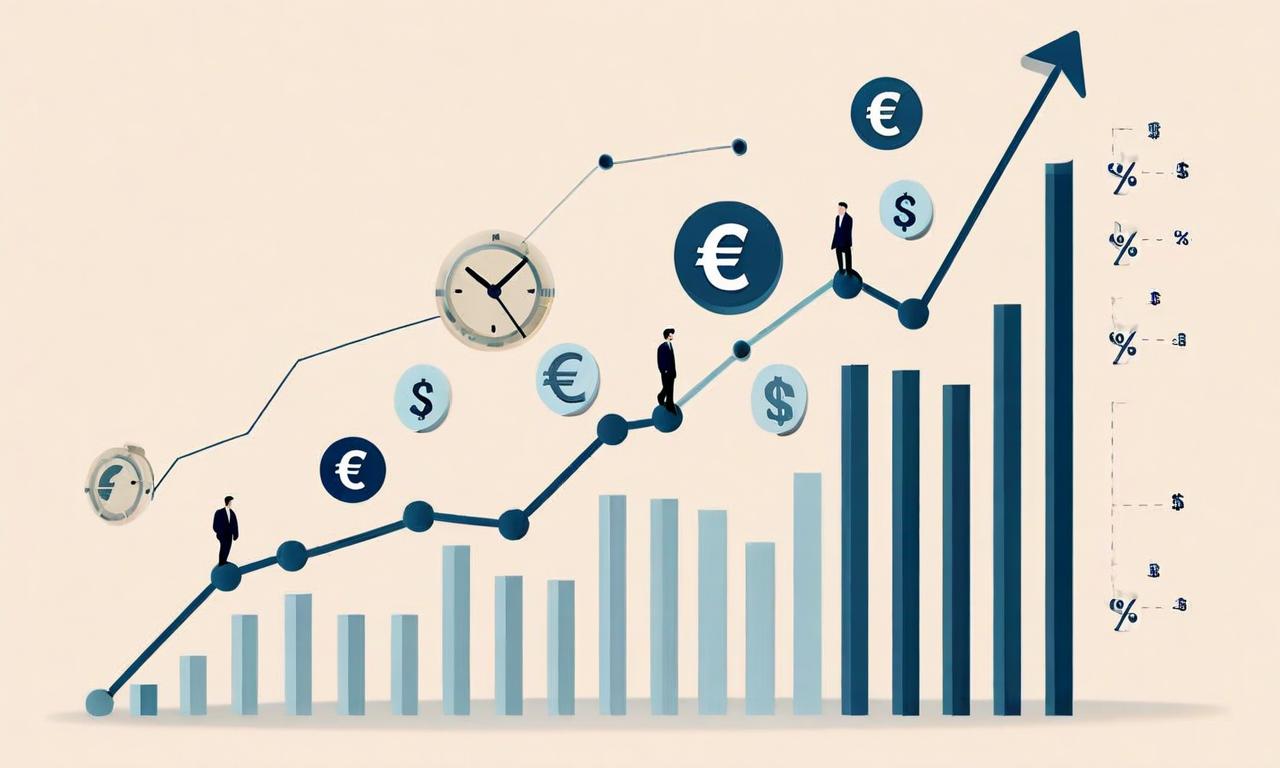Eurozone Q3 GDP Growth: Mixed Signals as Annual Rate Slows, Quarterly Pace Improves
Eurozone's Q3 GDP growth presents a complex economic picture. Annual growth slowed to 1.3% from 1.5%, but exceeded the 1.2% forecast. Quarterly growth doubled to 0.2% from 0.1%, matching expectations. The data suggests economic resilience amid challenges, potentially influencing future ECB policy decisions.

*this image is generated using AI for illustrative purposes only.
The Eurozone's economic landscape presents a nuanced picture as the latest GDP growth figures for the third quarter reveal both challenges and resilience in the bloc's economy.
Annual Growth Decelerates
The year-over-year GDP growth for the Eurozone in Q3 came in at 1.3%, showing a deceleration from the previous quarter's 1.5%. However, this figure surpassed economists' expectations of 1.2%, indicating a degree of economic resilience despite ongoing challenges.
Quarterly Momentum Improves
On a quarter-over-quarter basis, the Eurozone's economy showed signs of improvement. GDP growth doubled to 0.2% from the previous quarter's 0.1%, matching analysts' expectations. This acceleration in quarterly growth suggests a potential stabilization in economic activity.
Economic Data at a Glance
To better visualize the Eurozone's economic performance, here's a breakdown of the key GDP growth figures:
| Metric | Q3 Result | Previous Quarter | Estimate |
|---|---|---|---|
| Year-over-Year Growth | 1.30% | 1.50% | 1.20% |
| Quarter-over-Quarter Growth | 0.20% | 0.10% | 0.10% |
Implications and Outlook
The mixed nature of these results paints a complex picture of the Eurozone's economic health. While the slowdown in annual growth may raise concerns about long-term economic momentum, the improvement in quarterly growth provides a glimmer of optimism.
These figures come at a time when the European Central Bank (ECB) and policymakers are closely monitoring economic indicators to guide their decisions on monetary policy and economic stimuli. The better-than-expected annual growth, coupled with improved quarterly performance, may influence future policy considerations.
As the Eurozone navigates through global economic uncertainties, including inflationary pressures and geopolitical tensions, these GDP figures will be crucial in assessing the bloc's economic resilience and adaptability in the coming months.





























